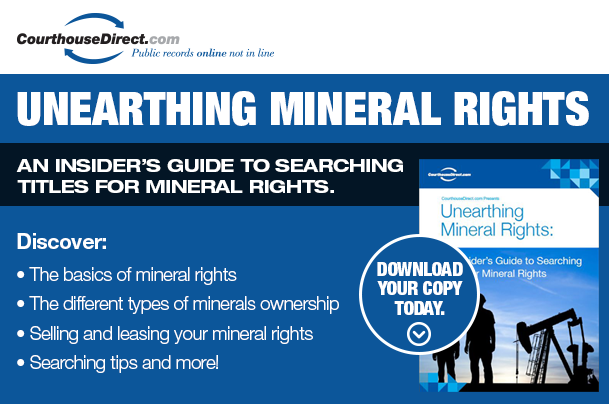 The oil and gas industry is an ever-changing business that requires dedication and discipline. For many professionals who work within its ecosystem, it also requires familiarity with the sometimes-formidable terms that inform its bylaws and regulations. One of the most prominent of these is the "mineral interest."
The oil and gas industry is an ever-changing business that requires dedication and discipline. For many professionals who work within its ecosystem, it also requires familiarity with the sometimes-formidable terms that inform its bylaws and regulations. One of the most prominent of these is the "mineral interest."
What Is a Mineral Interest?
A mineral interest confers the right to extract, modify and sell the minerals the underlie a defined parcel of property. In the oil and gas industry, the term "minerals" refers narrowly to underground hydrocarbons. In other contexts, "minerals" may refer to any type of valuable material that resides in the earth's crust.
Benefits of Mineral Interests
A mineral interest doesn't simply allow its holder to exploit mineral wealth. Since mineral extraction isn't always a simple matter, mineral interests offer several explicit or implied rights to complement their "main" function. These include:- The ability to use a portion of the surface parcel that sits above the area covered by the mineral interest for the purpose of accessing, transporting and housing extracted minerals
- The right to transfer mineral interests in accordance with state, local and federal regulations
- The right to receive consideration for minerals covered by the mineral interest, including royalty payments, bonuses, delay rentals and other payments
The so-called "Rule of Capture" is crucial to a thorough understanding of mineral interests. Simply put, this rule limits the liability of drillers or other entities whose wells capture oil and gas from adjacent properties to which they lack mineral interests or leases. Due to the nature of hydrocarbon mining, this issue arises with regularity. As a practical matter, landowners can protect themselves from economic loss by pooling leases or resources with adjacent property owners or seeking redress from state or local authorities. However, the most common impact of the rule is to encourage landowners to enter into mineral leases with drilling firms that already operate on adjacent lands.
Types of Mineral Property/Interests
Mineral interests come in several different forms. The most common include:
- Unified/fee simple estate: Undivided parcels whose owners enjoy mineral and surface rights
- Severed estates: Parcels whose surface rights owners lack any claim to the underlying minerals
- Fractional estates: A situation in which multiple parties own fractional shares of a parcel's mineral rights without enjoying special claims to surface rights
Determining Mineral Ownership
It's crucial for landowners in energy-rich regions to understand the nature of their mineral rights. To do so, landowners must review their current land titles as well as all previous deeds and transfers. If this information isn't readily available on a deed, landowners may need to seek out their neighborhood's plat and determine how their mineral rights were assigned. In the worst-case scenario, landowners who simply can't find any record of their properties' mineral rights may need to hire an attorney or landman to conduct a title search. This may also be done for properties whose owners can't be located.Final Thoughts
The concept of "mineral interests" is vital to the smooth functioning of the American oil and gas business. Producers and landowners alike must understand the basic nature of mineral rights as well as the means by which they're assigned, transferred and interpreted. While this guide should serve as a start, it's crucial for affected parties to perform their own research and reach independent conclusions on mineral rights issues.





















